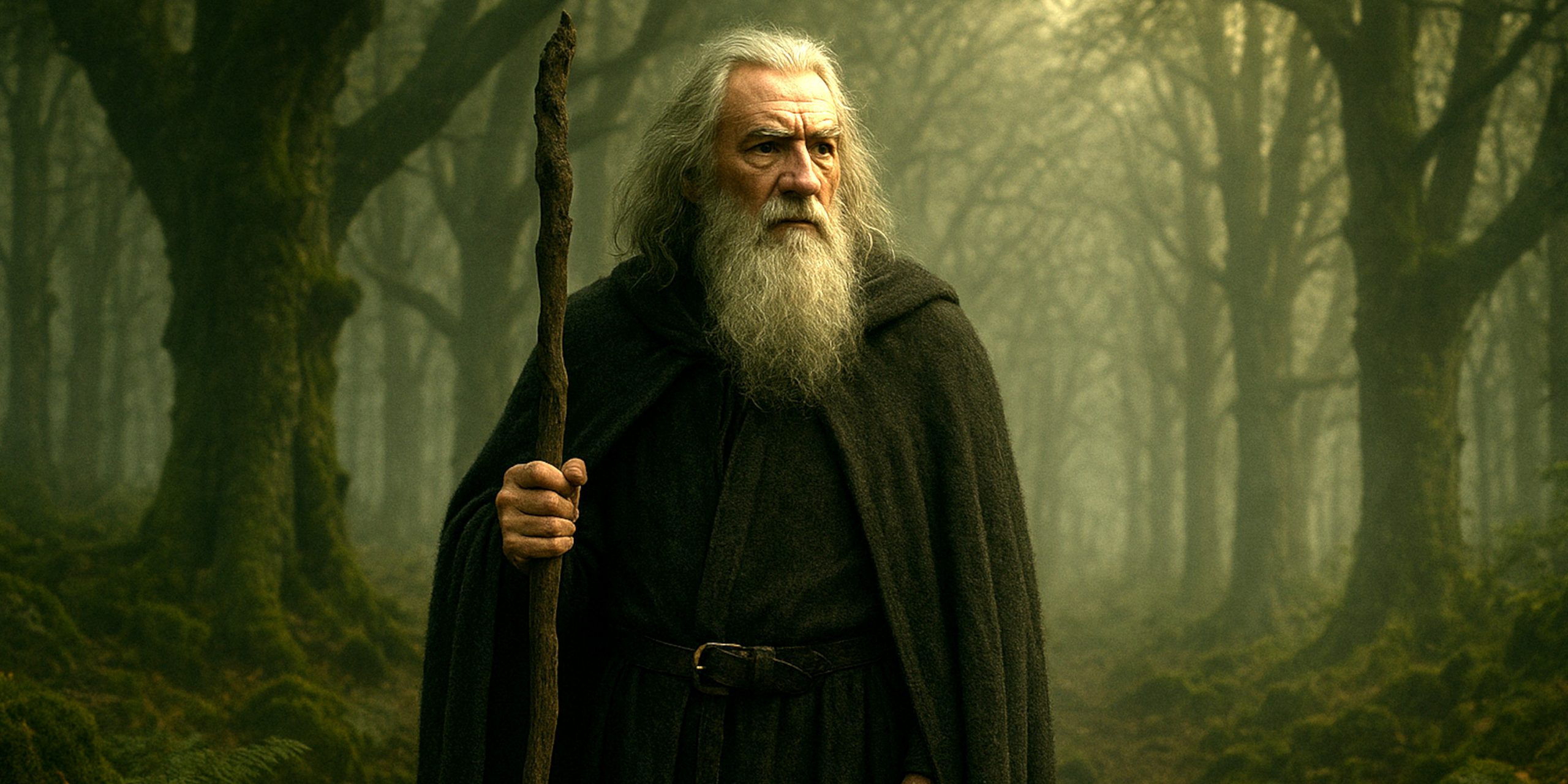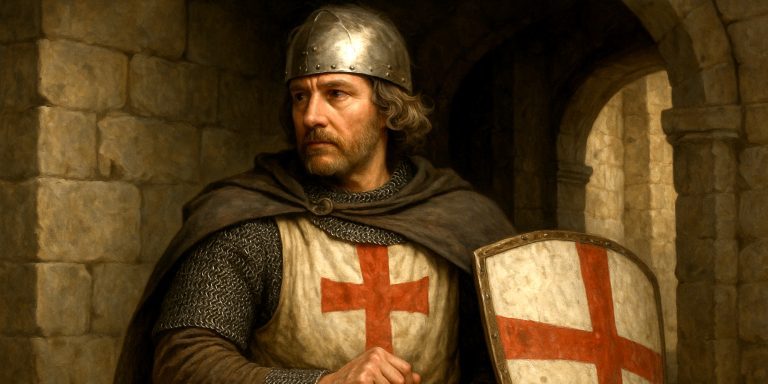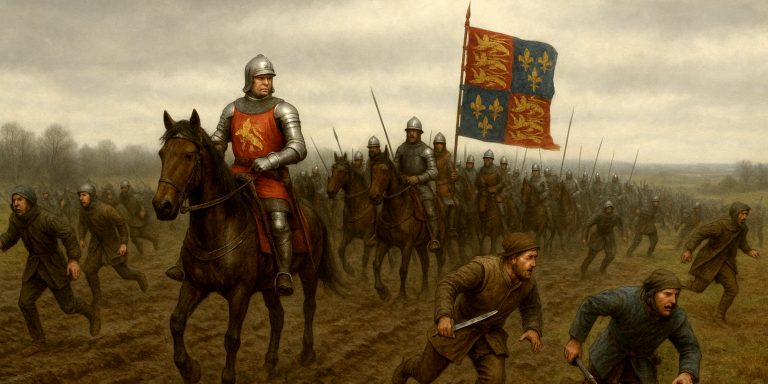
Few figures blur the line between myth and man quite like Merlin. He is at once the wild prophet of early British chronicles, the court magician of Arthurian romance, and a symbol of knowledge’s uneasy dance with power. Scholars have spent centuries unpicking his legend, finding faint threads of truth buried under centuries of embellishment. I rather admire him for that, he’s the historian’s nightmare and dream all at once.
The Historical Merlin
The earliest accounts of Merlin are far older than the chivalric tales of Camelot. He first appears in Welsh tradition as Myrddin Wyllt, a prophetic madman who lived in the forest after the Battle of Arfderydd (573 AD). According to the Annales Cambriae, this battle turned him from a court bard into a hermit plagued by visions. He’s described as a man torn apart by guilt and loss, living among beasts and muttering prophecies that no one quite understood.
Later chroniclers like Geoffrey of Monmouth transformed this wild figure into Merlin Ambrosius, blending him with another prophet, Ambrosius Aurelianus. Geoffrey’s Historia Regum Britanniae (1136) gave him a new identity: a half-mortal born of a demon and a nun, destined to advise kings and see the future. It’s a story that stuck, mainly because medieval audiences adored anything that mixed religion, scandal and political destiny.
Contemporary Quotes and Sources
In Geoffrey’s own words:
“He spoke with the wisdom of ages, as though time itself whispered in his ear.”
A rather flattering description for someone possibly inspired by a Welsh poet who went mad in the woods. Later, in Le Morte d’Arthur, Thomas Malory paints him as the subtle manipulator behind Arthur’s throne:
“Merlyn was so full of wonders that men marveled at him, for he could change his shape, and vanish at will.”
Between those two accounts lies a thousand years of myth-making, equal parts prophecy and propaganda.
Weapons and Artefacts
Though Merlin himself is seldom described wielding weapons, his influence over them is legendary. He is said to have forged or at least guided the creation of Excalibur, the sword that defined Arthur’s kingship.
According to later romances:
- Merlin arranged for the Lady of the Lake to guard Excalibur.
- He advised Arthur in choosing his knights’ arms, blending the spiritual with the practical.
- In Welsh versions, he carries a staff of rowan or yew, symbols of life and death, used more for channeling wisdom than striking blows.
Archaeologically speaking, no object has ever been verified as linked to Merlin. Yet countless swords and relics were passed off in his name during the Middle Ages, conveniently enriching monasteries and noble collections.
Battles and Political Role
Merlin’s link to warfare runs deep. In the Historia Brittonum, he is tied to the legend of Vortigern’s Tower, predicting that two dragons, red and white, fought beneath the foundations, symbolising the struggle between Britons and Saxons.
Later writers made him Arthur’s strategist, foreseeing battles such as Mount Badon and Camlan. Whether he fought is another matter. Some accounts suggest he carried no sword at all, relying instead on visions and riddles to shape military outcomes. The irony is rather poetic: the man behind Britain’s mightiest warlord may never have drawn a blade.
Fate and Death
Merlin’s end is as tangled as his legend. Some say he was imprisoned by Nimue (Viviane), the Lady of the Lake, trapped within a glass tower or oak tree by his own magic. Others insist he vanished into the Caledonian forest, living on in spirit.
The symbolism is clear enough, knowledge contained, power undone by love or hubris. Whether that feels like tragedy or justice depends on how you view him: a man who guided kings, or one who meddled too much in destiny.
Legacy and Cultural Afterlife
From medieval manuscripts to modern cinema, Merlin has never truly gone away. He is mentor, mystic, scientist, and seer, roles that each age reshapes to its liking. For Victorians, he was wisdom personified. For modern storytellers, he’s a warning about intellect untethered from morality.
Archaeologically, his legend persists in place-names like Merlin’s Hill in Carmarthenshire and Dinas Emrys in Snowdonia. Excavations there have found Iron Age fortifications, but no sorcerer’s bones, only the weight of story layered upon stone.
Even so, it’s comforting to think of him as still out there, muttering into the wind, watching our world stumble through its own prophecies. If history has taught us anything, it’s that Merlin’s real magic lies in how he refuses to be pinned down.
The Seven Swords Takeaway
As a historian, I’ll admit Merlin tests my patience. He is built from fragments, contradictions, and outright invention. Yet perhaps that’s the point. He embodies how myth becomes a vessel for cultural truth. We may never know who he truly was, but the legends tell us what early Britons valued: wisdom, wonder, and a touch of mischief.
And honestly, who could blame them? Every age needs its Merlin.



